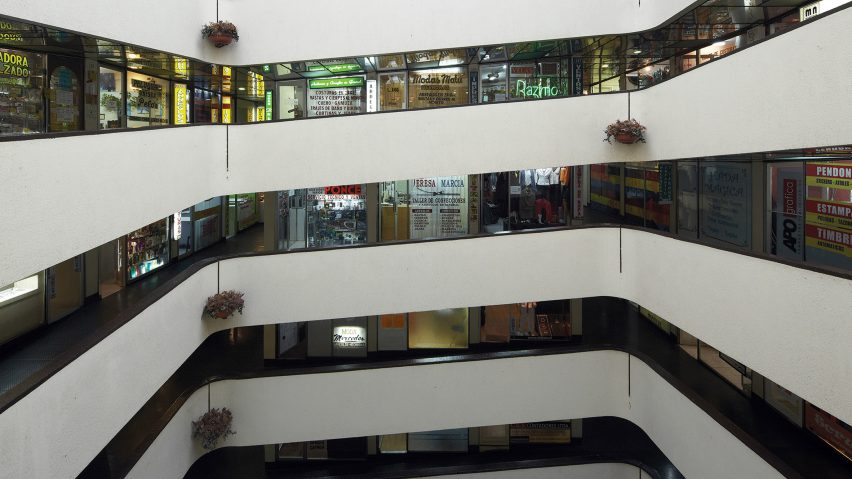Architectural photographer Cristobal Palma has taken a series of photos revealing the 46 spiralling shopping centres built across Chile in the 1970s and 80s.
Known as caracoles, meaning snails, these unusual buildings are believed to have taken inspiration from the Frank Lloyd Wright-designed Guggenheim Museum in New York.
The floors gently slope to form a spiral, meaning visitors can work their way up or down each building without needing to use stairs or a lift.
"The caracoles, which is what these shopping centres were generically called, are a very Chilean architectural phenomenon," explained Palma, who is based in Santiago.
"These buildings try to connect a series of ascending levels to the pedestrians on the street via a rising circular ramp, but instead of showing art on the perimeter walls, what you find are small commercial units."
Palma found 26 of these structures found in the capital, plus a further 17 dotted across other Chilean cities.
The photographer has captured each one from the same angle – facing straight into the central atrium, where the spiral is revealed.
Some of these atriums are simply round or rectangular, while other have more elaborate curved or angular shapes.
According to Palma, the shopping centres are a dying breed. Not only have they struggled to compete with the modern mall, but they have also become symbolic of a turbulent period in the nation's history.
"This architectural experiment might be one of the most interesting recent phenomena that has nonetheless been ignored by the academy in Chile and elsewhere," he told Dezeen.
"This lack of interest might be explained by the obvious sense of failure that the experiment has come to acquire over the years. The snail typology never managed to recover from the impact of the arrival of malls in the city in the early 1980s, and the way the city itself started to develop based on more widespread car use," he continued.
"But perhaps the main reason it's hard to pay greater attention to these buildings is their apparent banality. The period that saw this series being developed corresponds to the first phase of the Pinochet dictatorship – one of the most tragic and bloodiest periods in Chile's history."
"If the mall symbolises the triumph of the neoliberal city propelled by Pinochet's economic reforms, the caracoles seem to represent the final link in an interrupted city that never managed to be reconnected again."
Palma is one of the world's best-known architectural photographers, and earlier this year was included in Dezeen's list of photographers to follow on Instagram.
In an interview with Dezeen in 2014 Palmer stated that "everyone is becoming an expert in image-making", and that Facebook, Instagram and Flickr are posing a serious challenge to professional photographers.
Recent architectural projects he has photographed include a stables in Chile designed by Matias Zegers Architects and a Barclay & Crousse-designed clifftop villa in the Peruvian desert.

